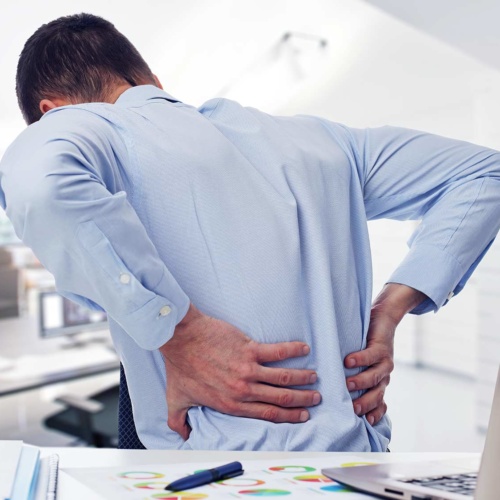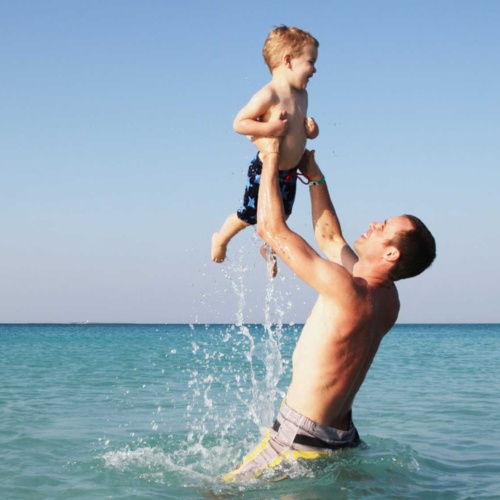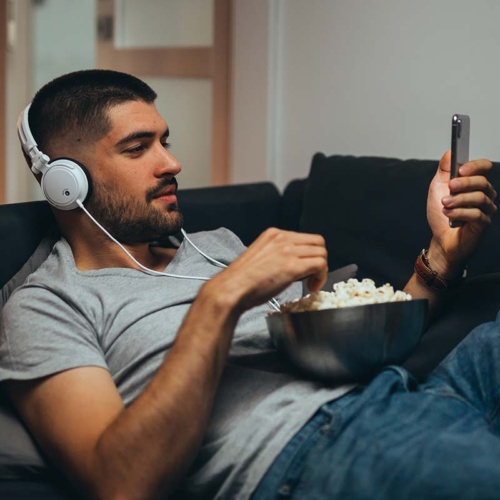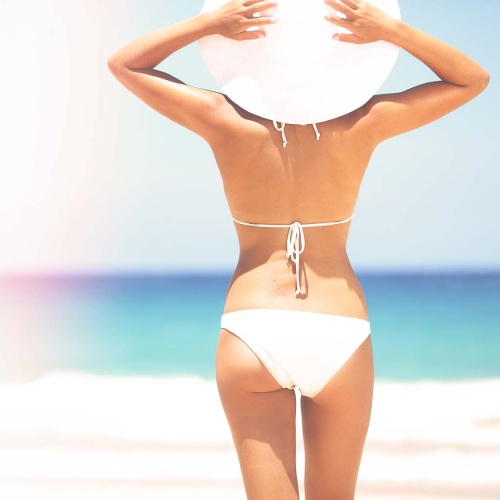How well an individual can run will depend on a lot of factors. The main one is fitness, but the next biggest factor is running economy – i.e the ratio of effort to distance and/or speed.
Numerous factors affect running economy such fitness, breathing and how well your muscles work, but one of the largest factors is biomechanics (or running mechanics). Most runners – and almost all recreational runners – could improve their mechanics, especially at the end of a race or a run when they are beginning to tire.
Today we are going to discuss the basics of running mechanics and give you a few tips to improve yours. We will talk about the importance of foot strike location, stride length, body positioning and the effects of footwear on your running gait.
Foot strike
When you run you are able to hit the ground with 3 parts of your foot; the heel, the midfoot, or the forefoot. Most runners (especially when in shoes) strike the ground with their heel. We have recently learnt that it does not necessarily matter what part of your foot hits the ground but where it hits the ground.
Many runners land with their foot out in front of their bodies and toes pointing back towards them (overstriding). This not only decelerates your body, but also increases the rate of impact forces, which can contribute to fatigue and injury. To maintain momentum and reduce running impact, think about landing with your foot under your body.
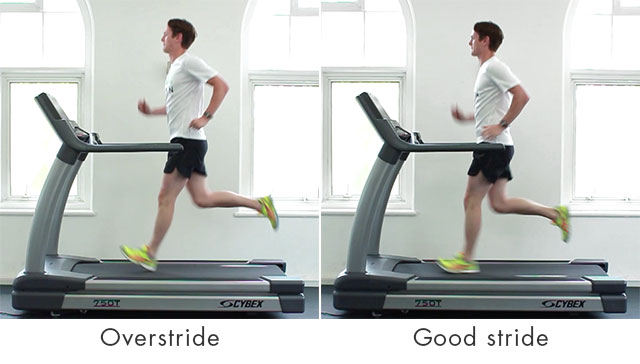
Terminal stance
This is the part of the stride before your foot leaves the ground. Running speed is determined by cadence (how many steps you take) and stride length (how long each step is). Long stride lengths come from an ability to extend your rear foot backwards past your hip.
The challenge for most runners looking to extend their stride length is that they’re generally very stiff in the front of their hip, especially if they spend all day sitting at work. Counteract this with frequent hip flexor stretches, and most importantly limit the amount of sitting you do during the day at work. Remember: extra centimetres equals extra speed!
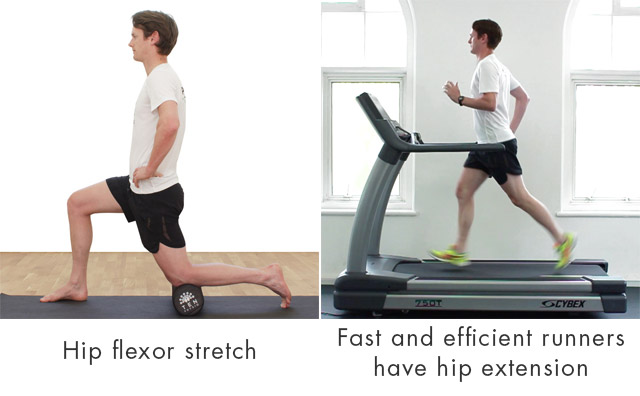
Arm swing and trunk rotation
Many runners expend extra energy through poor upper body technique. Arm swing position is a major contributor to this. Incorrect arm swing technique often leads to increased trunk rotation, which not only wastes valuable extra energy but also loses the stable platform for your legs to operate off (all that core work means nothing if you aren’t using it properly).
To correct your technique, make sure the arms don’t move across the body during running – the elbow should swing from the side of the body and move behind you, and the hands should not cross the midline.
Body position
A lot of runners try and keep their bodies very upright during the running cycle. Whilst it’s important to run tall, aim for a slight forward lean, otherwise you risk shifting your weight behind you and impeding your momentum. This lean should come from the ankles and not from the hips (which drops your weight backwards and results in our first problem of overstriding).
Try starting from a stationary position, then leaning and falling forwards to start your momentum in order to get used to this position.
Poor hip position
Poor hip position is a source of many injuries or inefficiencies in running. When one hip drops lower than the other, this has lots of implications for the rest of the body – none of them good.
The knee and hip are usually subject to more stress. Apart from the greater injury risk, as the hip is not holding the body in the correct place there is usually increased side-to-side movement during the running cycle, which uses more energy.
Hip strengthening exercises can be prescribed by your physiotherapist or exercise professional, or are usually incorporated into most Pilates classes.
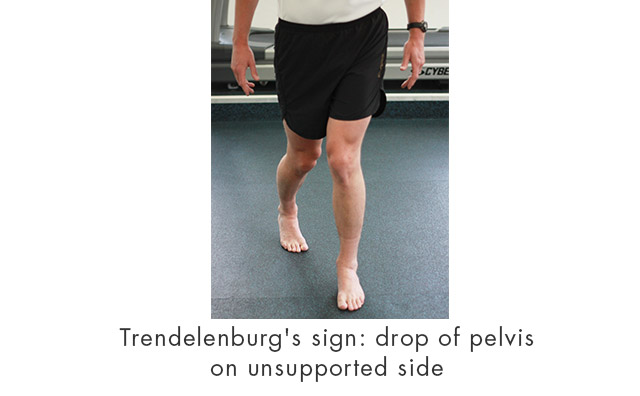
Shoe selection
The choice of running shoes have an effect on running economy in several ways.
Firstly, bulky running shoes have a tendency to make you overstride. If you are an overstrider and have difficulty changing this, you may benefit from wearing a shoe with less bulk. You should be looking for a shoe with a heel-to-toe offset of less than 6mm (most traditional running shoes have an offset of 10mm or greater).
Also, with every 100g of weight on your foot costing an extra 1% in energy, running in light shoes will help to reduce your energy expenditure.
With this being said it is vital that you select the correct shoe for you.
If you are a novice runner or carrying a few extra kilos you will be better off running in a shoe that has better cushioning or more support. Not only will they reduce the risk of injury, suitably cushioned shoes will also also save you energy by protecting your muscles from the impact forces created by striking the ground.
There is a trade-off between shoe weight and cushioning. It’s important to find the right balance for what works for your individual running style and injury history. Your physiotherapist will be able to guide you in the right direction when it comes to footwear choice.
Gait analysis
If you are not sure about your running technique, or are looking to improve your performance by running more efficiently, you can have your gait analysed by a physiotherapist. This usually involves running on a treadmill, often in front of a camera so footage can be taken and viewed in slow motion for greater accuracy of analysis.
From this analysis your physiotherapist will be able to provide you with recommendations on gait changes, stretches and strengthening exercises that will enhance your running.
Top Ten Tips
- Try and land with your foot under your body rather than in front of you
- A higher cadence can help improve your foot strike position
- Improve your stride by lengthening the backward leg, not the leading one. (Hip flexor stretching can improve your stride length.)
- Your elbow should swing behind your body and your hands should not cross the midline
- Limiting excessive trunk rotation will save energy
- Try leaning forward from the ankles to get your momentum heading in the right direction
- Strong hips help strong running
- Light footwear will help you save energy
- New or less fit runners may be better off in a pair of well cushioned shoes
- If you feel as though you would benefit from gait correction, consult your physiotherapist who will be able to give you tips and corrective exercises


